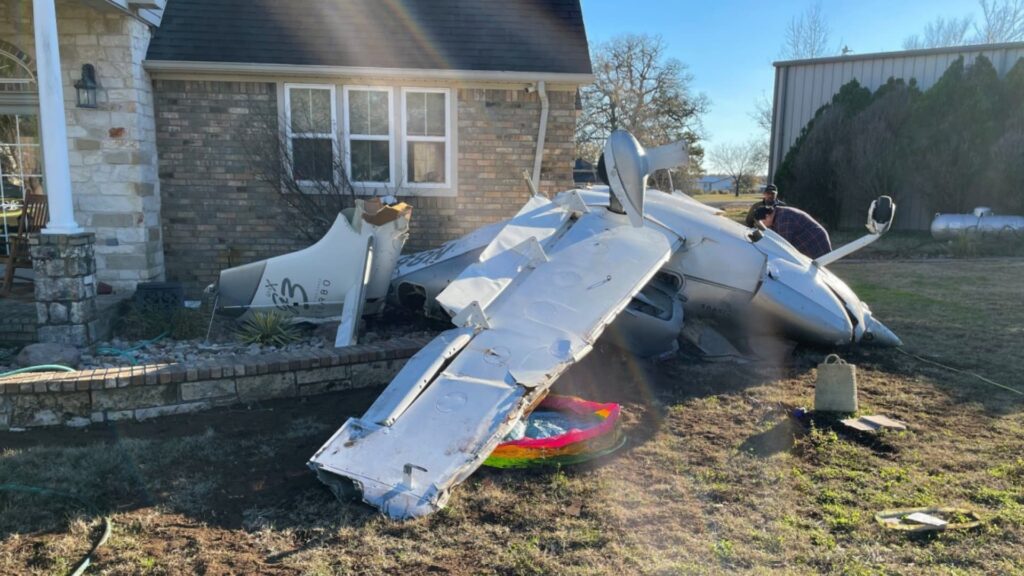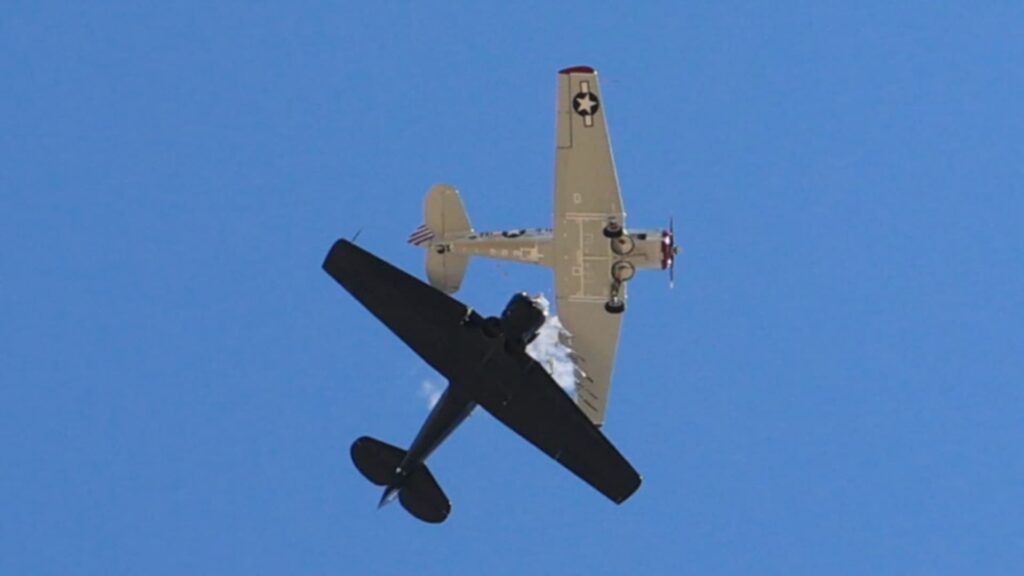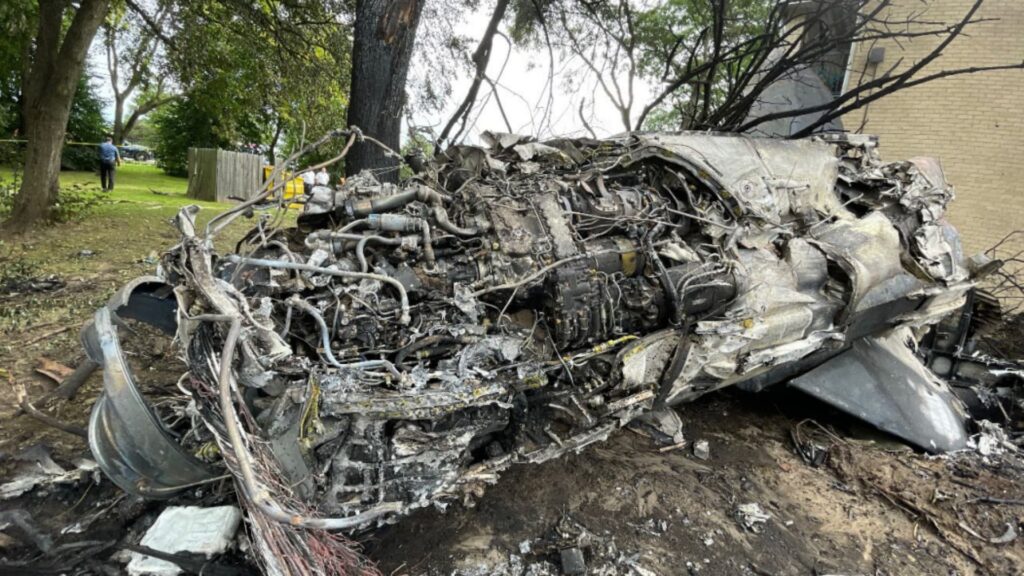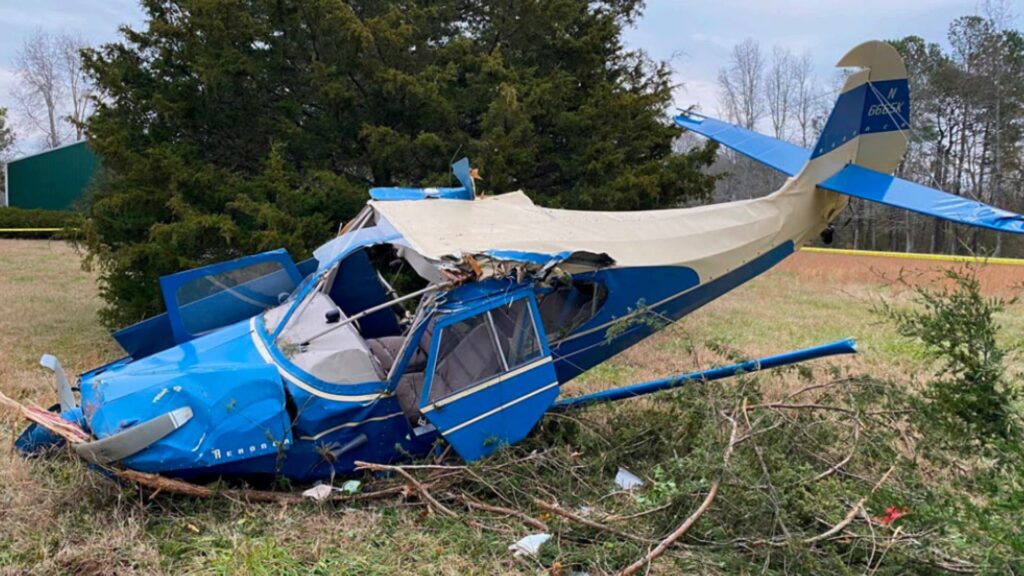The Final Flight
On a hot summer afternoon in Southport, North Carolina, a seasoned pilot took off in his beloved Mooney M20R for what was supposed to be a short hop to North Myrtle Beach. But within minutes, the flight turned into a tragedy. Witnesses heard the pilot radio an engine failure and his intent to return to the runway. He never made it. The airplane crashed into a residential neighborhood, ending in a fiery wreck that claimed the pilot’s life.
This was not a flight doomed by weather, inexperience, or surprise mechanical failure. This was a preventable accident, born of a series of conscious decisions that prioritized convenience over caution, confidence over compliance.
An Airplane in Limbo
The aircraft, a 1998 Mooney M20R registered as N13LV, had sat in maintenance limbo for nearly eight months. It had been at Cape Fear Regional Jetport (SUT) since October 2022 for relatively modest squawks: interior lighting issues, brake servicing, a standby vacuum hose, and an exhaust leak. But the mechanic tasked with the job ran into a red flag early on—dead batteries.
Upon inspection, the mechanic made a troubling discovery: instead of the correct two 24-volt batteries designed for the aircraft’s electrical system, someone had installed four 12-volt batteries. This wasn’t just a corner-cutting fix—it rendered the airplane unairworthy by design. The mechanic refused to reinstall the same configuration, citing both legality and safety. When he informed the pilot, the response was not concern but insistence: give me my airplane back.
The mechanic, sticking to his principles and the regs, handed over the plane but marked it clearly on the invoice as unairworthy.
Smoke, Oil, and a Decision to Fly
On June 25, 2023, under clear skies and warm temperatures, the 69-year-old private pilot returned to the airport to reclaim his aircraft. Witnesses watched as he taxied out of the maintenance hangar, trailing oil and belching white smoke—visual cues that something was very wrong.
He didn’t abort the flight. Instead, he lined up on Runway 23 and took off.
Within three minutes, the pilot was back on the radio reporting an engine failure. He was attempting a left-hand return to the same runway, but he never made it. The Mooney went down in a neighborhood just half a mile from the threshold. A post-impact fire engulfed the aircraft, though thankfully the flames spared nearby homes. The pilot did not survive.

Inside the Aircraft Wreckage
The crash scene told a story of desperation and mechanical betrayal. The airplane hit the ground on its right side, scattering debris and oil. The left wing remained partially attached, flaps extended, indicating the pilot was attempting a slow-speed approach. But the damage to the engine was catastrophic.
Investigators found the engine inverted, with the propeller still attached. The No. 4 connecting rod had blown through the engine case. An oil sump accessory port plug was loose, and oily blue-stained baffling was found beneath it. The oil dipstick? Bone dry.
There had been no oil in the engine. The likely cause: a failure to complete reassembly during maintenance, specifically the loose sump plug. The engine had seized from oil starvation—a fatal mechanical failure triggered by the pilot’s decision to take off in an airplane that was not airworthy.
Who Was the Pilot?
The pilot was experienced, with 3,945 flight hours under his belt, all self-reported during his most recent FAA medical exam in 2017. He held a private pilot certificate with an instrument rating and flew primarily single-engine land aircraft. While this might suggest a solid aviation background, there are gaps. His logbook was never recovered. His medical certificate, a second-class with limitations, was eight years out of date. This wasn’t a fresh-out-of-training newbie making rookie mistakes; it was a veteran pilot making a fatal miscalculation.
Toxicology showed no impairing substances—just common medications for blood pressure and heart health. This wasn’t an impairment issue. This was about judgment.
A Chain of Decisions
The NTSB’s conclusion is blunt: “The pilot’s improper decision to fly a known unairworthy airplane, which resulted in a total loss of engine power due to oil starvation.”
Let’s break down the human factors at play here:
- Denial or Overconfidence? The pilot was told clearly by the mechanic that the aircraft was unairworthy. Yet he chose to disregard that warning.
- Mechanical Naivety or Defiance? Replacing a 24-volt system with four 12-volt batteries isn’t just unconventional—it’s outright unsafe. The pilot not only endorsed it but asked the mechanic to put it back in.
- Warning Signs Ignored: On taxi, white exhaust smoke and oil puddles were visible. These were not ambiguous symptoms. They screamed, “Don’t fly!”
Lessons from a Preventable Tragedy
This accident underscores a powerful truth in aviation: experience doesn’t inoculate against poor decisions. In fact, sometimes, it may embolden them.
Here are some key takeaways for every pilot, mechanic, and aircraft owner:
- Listen to Your Mechanic. If a certified A&P mechanic tells you your aircraft is unairworthy, that’s not a suggestion—it’s a warning backed by regulation, experience, and safety margins.
- Respect Airworthiness. Flying an aircraft that is knowingly unairworthy is not only dangerous, it’s illegal. A pilot who dismisses this takes on immense risk—not just to themselves, but to people on the ground.
- Trust the Data, Not Just Your Gut. Oil streaks, smoke, and an incomplete maintenance history are not things to wave off. They are red flags that demand action, not hope.
- Documentation Matters. The absence of recovered logbooks and outdated medical certification raises questions. Keeping up with paperwork isn’t just bureaucracy—it’s an essential part of airmanship.
- Every Flight is a Decision Point. Just because the weather is good and the destination is close doesn’t mean it’s safe to go. The decision to fly—or not—might be the most important one you make.

Final Thoughts
This was a tragedy that didn’t have to happen. A Mooney M20R, a powerful cross-country machine, destroyed not by chance but by choice. It’s a sobering reminder that the real engine of flight isn’t horsepower—it’s judgment.









7 Comments
fly or not fly could be the most important thing we teach are students j
Would you drive a car that was leaking oil and bellowing smoke? Of course not! And that’s ground transportation. Why on EARTH would you take an airplane up in that condition? He wasn’t over confident, he was suicidal. Thankfully no one on the ground was hurt. Geesh.
The battery issue covers the mechanic but it sounds like a different error regarding the oil reassembly, or lack there of, is what caused the engine to seize. Did anyone on the ground attempt to contact the pilot to let him know that there was a leak and smoke? Is it possible he didn’t notice these indications and took off thinking his only issue was an incorrect battery configuration that probably worked just fine?
The unorthodox battery setup did not cause the plane to crash, it was the oil problems due to incomplete maintenance, the pilot’s insane decision to take off, and then his inability to handle the loss of engine emergency.
For the engine oil issue, there may be some blame to place on the mechanic for handing over the plane in that condition, but ultimately it is the pilot’s responsibility to verify sufficient oil and no leaks during preflight. There was no mention of a preflight, was any performed at all?
This sounds like it is a case of where the pilot/owner should have either had the mechanic put in the correct battery configuration and complete the maintenance, signing off the airplane as airworthy (then doing a thorough post-maintenance preflight), or, arrange for a ferry permit to get the plane back and deal with the issues separately (and do the same post-maintenance thorough pre-flight).
After maintenance I do a very thorough preflight including running the engine until fully warmed up, shutting down, and checking for leaks and especially oil levels. As my plane’s fuel bladders do not allow for measuring with a dipstick, I always take off with full fuel, but that’s a separate, somewhat paranoid thing I do, just to be sure.
For a non-aviator aviation enthusiast, could you explain why replacing the two 24V batteries with four 12V units is unsafe? I totally understand that it isn’t per certification; If I were a pilot I’d want things right. I can think of weight & balance issues, extra connections to fail, possibly making a series vs. parallel error, but I’d like to gain insight.
In reference to the above 12 vs 24 volt batteries, the plane had set for about 8 months and one would think they would be dead, as which the mechanic reported. So how did the pilot get the plane started if the batteries were dead?? As a question, why replace the two 24 volt batteries with four 12 volt batteries??? Cost. I Googled the required batteries for the Mooney M20R, two Concord RG24-11M, 24V, 11AH batteries at $900.00 USD each. The Concord RG-25XC, 12 Volt battery, at a cost of $429.00 USD, and that is if the 12 volt batteries were actually ‘aircraft grade.’
The oil problem, even if the mechanic had never touched the oil system, what pilot would go flying without checking the oil and gas??? He may not clean the windscreen, check the tires, etc., but not to check the gas and oil??? Another point, would you leave your ‘beloved’ flying machine for 8 months without checking on what’s going on with it??? The tragedy has happened, nothing can prevent it now. But lessons learned for other pilots. We hope.
In reference to the above 12 vs 24 volt batteries, the plane had set for about 8 months and one would think they would be dead, as which the mechanic reported. So how did the pilot get the plane started if the batteries were dead?? As a question, why replace the two 24 volt batteries with four 12 volt batteries??? Cost. I Googled the required batteries for the Mooney M20R, two Concord RG24-11M, 24V, 11AH batteries at $900.00 USD each. The Concord RG-25XC, 12 Volt battery, at a cost of $429.00 USD. There is a question if the four12 volt batteries were actually ‘aircraft grade.’ But again, the comment was “the batteries were dead’, how did the engine get started??
The oil problem, even if the mechanic had never touched the oil system, what pilot would go flying without checking the oil and gas??? He may not clean the windscreen, check the tires, etc., but not to check the gas and oil??? Another point, would you leave your ‘beloved’ flying machine for 8 months without checking on what’s going on with it??? The tragedy has happened, nothing can prevent it now. But lessons learned for other pilots. We hope.